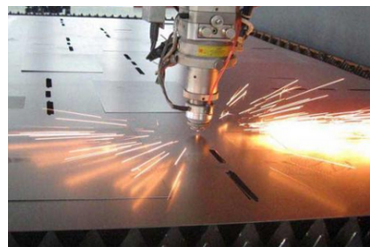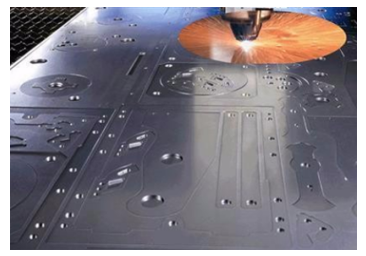Laser Cutting
 Cutting is an intuitive application of laser devices. When converging a beam of photons onto a small spot, the resulted high energy density can easily vaporize materials. Thus, by moving the beam along a designed path, the work piece can be separated into individual parts.
Cutting is an intuitive application of laser devices. When converging a beam of photons onto a small spot, the resulted high energy density can easily vaporize materials. Thus, by moving the beam along a designed path, the work piece can be separated into individual parts.
Laser cutting techniques have now evolved into multiple forms, including vaporization cutting, fusion cutting, reactive fusion cutting, thermal stress cracking, scribing, and cold cutting. Each one of them involves different operating modes (pulsed or CW), energy level, and utilization of an assist gas.
The choice of the optimal cutting depends on material physical properties, light sources and other factors. Today, laser cutting has become the most common laser manufacturing technology.
 Laser cutters rely on non-reactive (inert) gases as the assist gas. Nitrogen would be the typical choice in the process of cutting stainless steels, aluminum and its alloys.
Laser cutters rely on non-reactive (inert) gases as the assist gas. Nitrogen would be the typical choice in the process of cutting stainless steels, aluminum and its alloys.
Cutting with non-reactive gases often refers to clean cutting or high-pressure cutting. Here, the material is melted solely by laser power and blown out of the cutting kerf by kinetic energy of the gas jet - typically by nitrogen.
With onsite CanGas® PSA nitrogen system, all direct and indirect costs from transport and delivery of nitrogen, as well as nitrogen cylinder and tank rental, are omitted. As the associated CO2 emission stopped, this technology is also a real contribution to environment.
Related Products
 Brochure: Onsite PSA Nitrogen Generator for Laser Cutting
Brochure: Onsite PSA Nitrogen Generator for Laser Cutting

